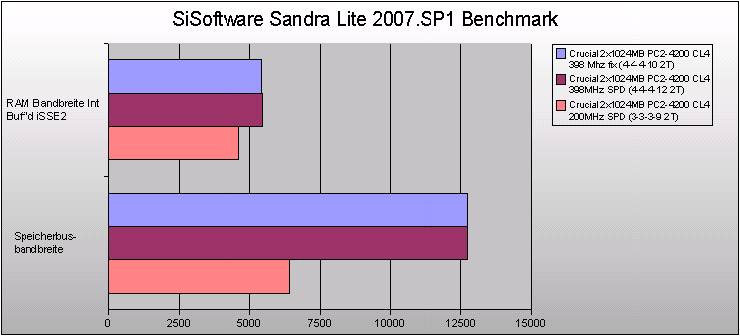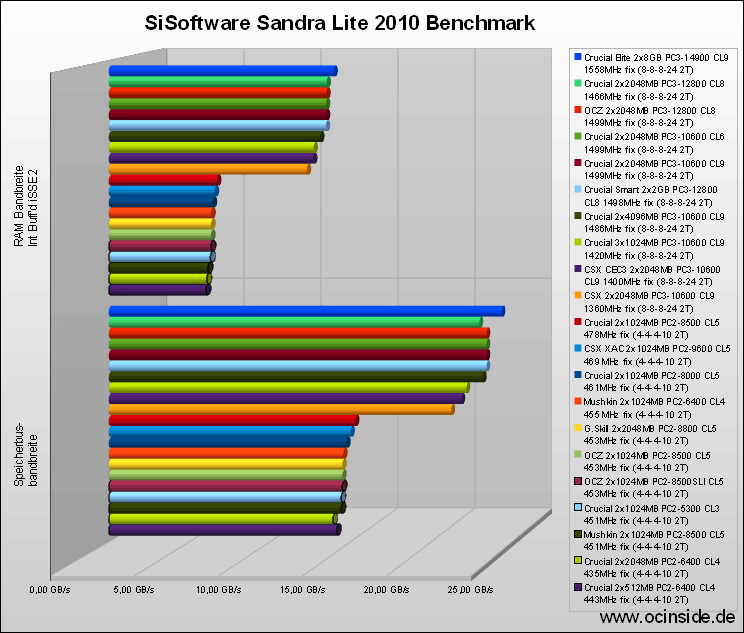
Let us begin with the most important part of the test report, because the optics and packing is of course rather secondary and the highest possible stable performance is the most important factor. CPU on different frequencies depending on the reference clock for the different memory benchmarks. Thus the multiplier adjustment remains on 9x with all frequencies, because an adjustment for the CPU in half multiplier steps would be too inaccurate to get nearly the same CPU frequency for all tests.
Microsoft Windows XP Professional SP2 is used as the operating system. The stability was examined with the software Memtest86
and SiSoft Sandra Lite 2007.SP1 program is used for all benchmarks, since it offers extensive adjustments and a fast result comparison.
First the maximum possible frequency of the memory module was determined. The memory frequency was increased in small steps with a fixed memory timing of 4-4-4-10 2T and default memory voltage, as long as the detailed memory test with Memtest86 runs without any errors. This quite long testing time ensured that this frequency works really stable with these modules.
The highest possible frequency with 4-4-4-10 (Tcl Trcd Tras Trp) timings was stable with 398 MHz !
Of course it’s possible to run higher frequencies with increased voltages or lower timings, because the frequency values and timings depends directly from each other. Officially Crucial specify the highest voltage of 1.8 V without loosing the warranty. But overclocking is usually higher than the specification, so with heatsinks it should be possible to give them more voltage 😉 However, the additional ECC is also overclocked and the error correction won’t work, if this chip is overclocked too high.
This highest possible frequency was compared to two other settings. On the one hand 398 MHz with SPD values (these are given by the manufacturer in the SPD IC), and on the other hand 200 MHz (x2) with SPD values.
By the way, the “Memory Bus Range” is no benchmark value, but this value is quite simple to calculate by the frequency and is useful for the benchmark comparison.
Here’re the benchmark results:
| Frequency | Timing | RAM Range Int Buff’d iSSE2 | Memory bus range |
| 398 MHz | fix (4-4-4-10 2T) | 5445 MB/s | 12736 MB/s |
| 398 MHz | SPD (4-4-4-12 2T) | 5448 MB/s | 12736 MB/s |
| 200 MHz | SPD (3-3-3-9 2T) | 4631 MB/s | 6432 MB/s |
Here’s a diagram of the benchmark values:

Here is a direct benchmark result comparison of some DDR2 and DDR memory modules:

The benchmark results of the Crucial PC2-4200 CL4 are slightly behind the results of the G.Skill PC2-6400 modules and this is a nice result for those modules with ECC. Nevertheless they can’t reach the performance of high-end RAM and runs on default voltage “only” up to approx. 398 MHz (398 MHz is round about DDR2-800). Currently the NON-ECC Crucial PC2-5300 CL3 have a better price/performance ratio and allows an unbelievable overclocking. So if you don’t need the ECC feature, they should be preferred.

